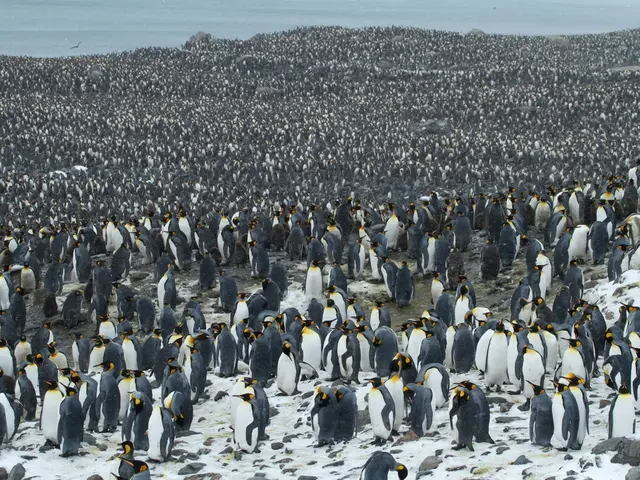Preparation for winter in Europe questioned due to reduced gas supplies
The European Union (EU) has made significant strides in reducing its dependence on Russian gas, particularly in the wake of Moscow's full-scale invasion of Ukraine in 2022. This progress has been marked by a substantial decrease in Russian oil imports, with a reduction of about 89% from 2021 to 2024. However, countries such as Hungary and Slovakia remain heavily reliant on Russian energy.
The EU, as a whole, has managed to reduce direct Russian oil imports from about a third to approximately 3% of total oil imports. The reduction in Russian gas imports has been equally impressive, falling from 45% to 19%.
Europe's diversification of energy supplies has been a key factor in this success. The EU has been sourcing liquified natural gas (LNG) from Norway, the United States, and Qatar, among others. This diversification has helped to mitigate the impact of potential supply disruptions and price spikes.
The EU's gas reserves, while lower than the 90% cushions of the last few years, are stronger than they were in 2021. As of September 15, 2025, EU gas reserves stood at just over 80%. This strong reserve level provides an additional cushion for the coldest months of the year, offering reassurance against potential shortages.
Initial fears of price spikes and supply disruptions were widespread, particularly in countries like Austria, Slovakia, and Hungary. However, the actual market impact was muted due to Western Europe's diversification of energy sources and strong underground storage levels heading into winter.
The European Commission has been proactive in its efforts to further reduce dependence on Russian gas. The Commission requires EU states to submit national plans for the phaseout of Russian gas by the end of 2022. The Commission also aims to completely ban all remaining imports of Russian gas and LNG by 2027.
Moreover, the EU has been continuing to boost the rollout of renewable energies, including solar and wind. This shift towards renewable energy sources is expected to further reduce Europe's reliance on fossil fuels from Russia.
However, progress in diversifying energy sources from Russian fossil fuels has been uneven among some Visegrad countries due to a lack of investment in renewables. This disparity highlights the need for continued support and investment in renewable energy infrastructure across the EU.
Despite these efforts, it is important to note that isolated shortages could spark temporary spikes in gas prices. While prices are not expected to climb to the extremes of €340/MWh ($400) seen in 2022, Europe must remain vigilant and continue its efforts to reduce dependence on Russian gas.
The expiration of the Ukraine-Russia gas transit agreement on January 1, 2026, closed one of the last major routes for Russian gas to flow into the EU. This milestone marks a significant step in Europe's ongoing efforts to reduce its dependence on Russian energy.
In conclusion, the EU has made considerable progress in reducing its dependence on Russian gas. This progress has been achieved through a combination of reducing oil imports, diversifying energy supplies, and boosting the rollout of renewable energies. While there is still work to be done, Europe is well on its way to achieving energy independence from Russia.
Read also:
- Federal petition from CEI seeking federal intervention against state climate disclosure laws, alleging these laws negatively impact interstate commerce and surpass constitutional boundaries.
- President von der Leyen's address at the Fourth Renewable Hydrogen Summit, delivered remotely
- Unveiling Innovation in Propulsion: A Deep Dive into the Advantages and Obstacles of Magnetic Engines
- Intensified farm machinery emissions posing challenges to China's net-zero targets








